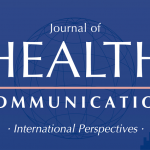Online Discussion on Long Acting Reversible Contraceptives and Youth Runs Until September 19
Health communication and family planning professionals are participating in a moderated, online discussion on long acting reversible contraceptives (LARCs) in low- and middle-income countries. This virtual event is currently taking place through Friday, September 19 on the online network, Springboard for Health Communication.
LARCs, such as intrauterine devices and implants, are often underused, especially among young populations. Often, providers are reluctant to advise youth on these contraceptives, and long-acting methods tend to get overshadowed by longer-standing and shorter-acting methods, such as the oral contraceptive pill, condom and injectable.
The aim of this discussion is to build a conversation among global health family planning professionals from different contexts to learn from each other’s challenges, successes and resources around youth’s use and acceptance of LARCs. By hosting the conversation on Springboard, HC3 also hopes to build connections between those working in this area of sexual and reproductive health.
The first day produced valuable background information on the family planning context from perspectives in Rwanda and in Bangladesh. Erin Portillo, Family Planning Program Officer for the Health Communication Capacity Collaborative (HC3) and one of the moderators for the two-week discussion, noted in the first day recap,
It seems that in some contexts, there are overlaps in social norms and public policy, particularly regarding the provision of contraceptives to certain young populations (such as unmarried and nulliparous youth). However, as we saw in the literature review and know from the WHO’s Medical Eligibility Criteria and similar protocols from the Centers for Disease Control and Prevention, LARCs are indeed safe for young and nulliparous users.
The discussion shifted from the policy environment on its first day to providers on the second day with a summary of findings from an HC3 internal literature review and the following proposed questions:
- What are issues at the service-delivery level that prevent youth uptake of LARCs where you work?
- How does LARC provision for youth differ between the private and public sector where you work?
Future topics to be addressed in the coming days include knowledge, attitudes and behaviors of youth around LARCs; improving youth access to LARs; and HC3’s future youth and LARC activities.
Join the Springboard discussion today. Moderators and users want to hear what you’ve experienced in your work with providers, young people and family planning methods, including LARCs. What works best – and what doesn’t?
To post and participate, you’ll need to register for the site, and then search for and join the SBCC for Family Planning group where the discussion is taking place.








Leave a Reply
Want to join the discussion?Feel free to contribute!